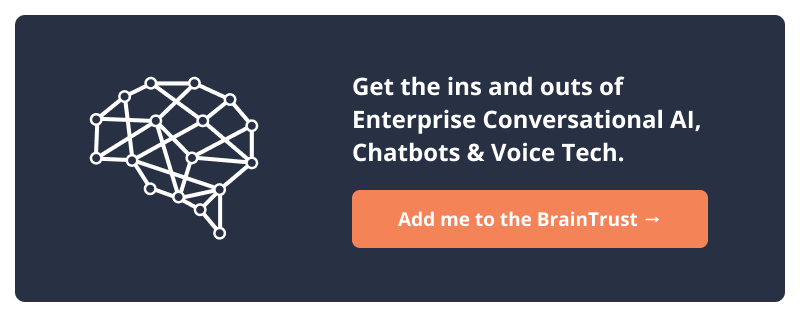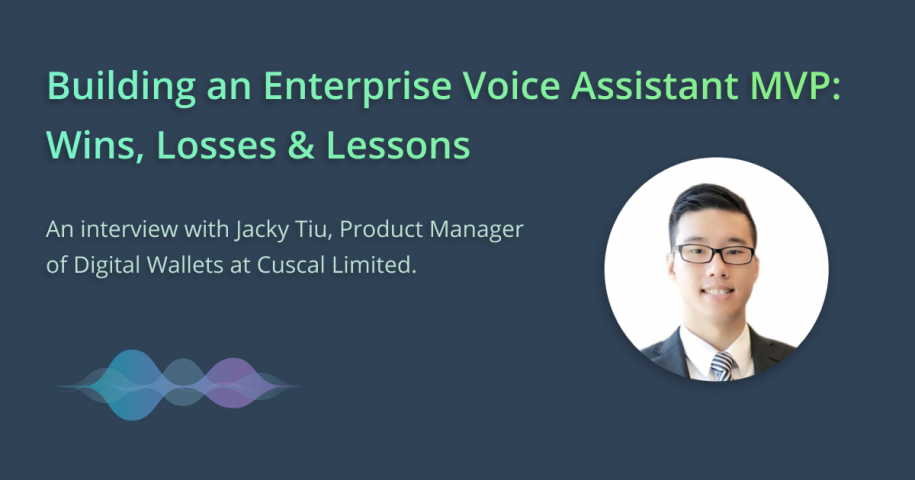Building a Voice assistant isn’t easy, let alone one fit for enterprises in fintech. Notorious for its highly regulated environment coupled with complex and fractured technology landscapes, building an enterprise-grade voice assistant in the financial services industry is one of the hardest challenges.
Alas, voice-enabled technology in banking is the world we’re heading into today.
Which is why we’re interviewing Jacky Tiu, Product Manager for Digital Wallets and New Product Initiatives at Cuscal Limited, who we recently had the pleasure of working with on an enterprise voice project.
Here he shares his Wins, Losses and Lessons from leading the Voice and Chatbot product at Cuscal.
What were your Wins?
Our main win was that we were able to have a much stronger understanding of the Voice Assistant and Chatbot space, and how it may be leveraged in the future for Banking. Together with PST, we were able to develop and conceptualize an MVP, a clear roadmap and demo the product to several clients.
We were also able to understand the key benefits and costs surrounding the product and a variety of alternatives in order to enable a solution. PST also helped us develop clear and refined artefacts which may be used for when the timing is right to develop a Voice Assistant / Chatbot product.
What about any Losses?
Our main loss was that we were unable to launch an MVP product for either Voice Assistants or Chatbots. This was primarily associated with lack of funding, coupled with our client base who are more “market followers” rather than market “innovators or leaders”.
What were the Biggest Lessons you learned?
We found that while Voice Assistants and Chatbots had some very vast capabilities, there were not key definable problems that had to be solved or were solved best via Voice Assistant / Chatbot.
Furthermore, funding should be secured first by finding the right stakeholders who are onboard with this venture. If funding isn’t available all at once, the MVP product itself should be broken down into stages. Start by adding the features clients may have found useful the most, and then adding more features through iterative testing and learning.
By doing so, this can demonstrate to clients that the product can provide benefits and in turn, draw in more funding to continue growing and enhancing it.
Related: Pros and Cons of implementing a Voice Assistant
And lastly, a Bonus Tip for those starting out or may be stuck?
Remain focused on the fundamental product questions of ‘Who is the product for?’ and ‘What is the problem?’. While there will always be cool use cases for a particular product (let’s say, making a payment with a voice command), we must always know who would use this feature, what problem are they trying to overcome by using it, and be considerate of privacy concerns. If you are a B2B business, understanding your client base is also crucial to the success of your product.
—
Building Enterprise Voice and Chat Technology is undoubtedly challenging, but you don’t have to do it alone. Subscribe to our Monthly Brain Trust below to access our panel of experts who have been there and done that in the Conversational AI realm.

Jacky is a Product Manager at Cuscal Limited, managing Digital Wallets and New Product Initiatives. Prior to joining Cuscal, he graduated with a B.Comm / LLB at UNSW and completed a Graduate Program at the Westpac Group in their Consumer Bank Division. He is passionate about products within the Banking space, whether they are traditional or new digital ones, and is always seeking ways to develop or improve them by leveraging his experiences in Banking, Consulting and Legal.

